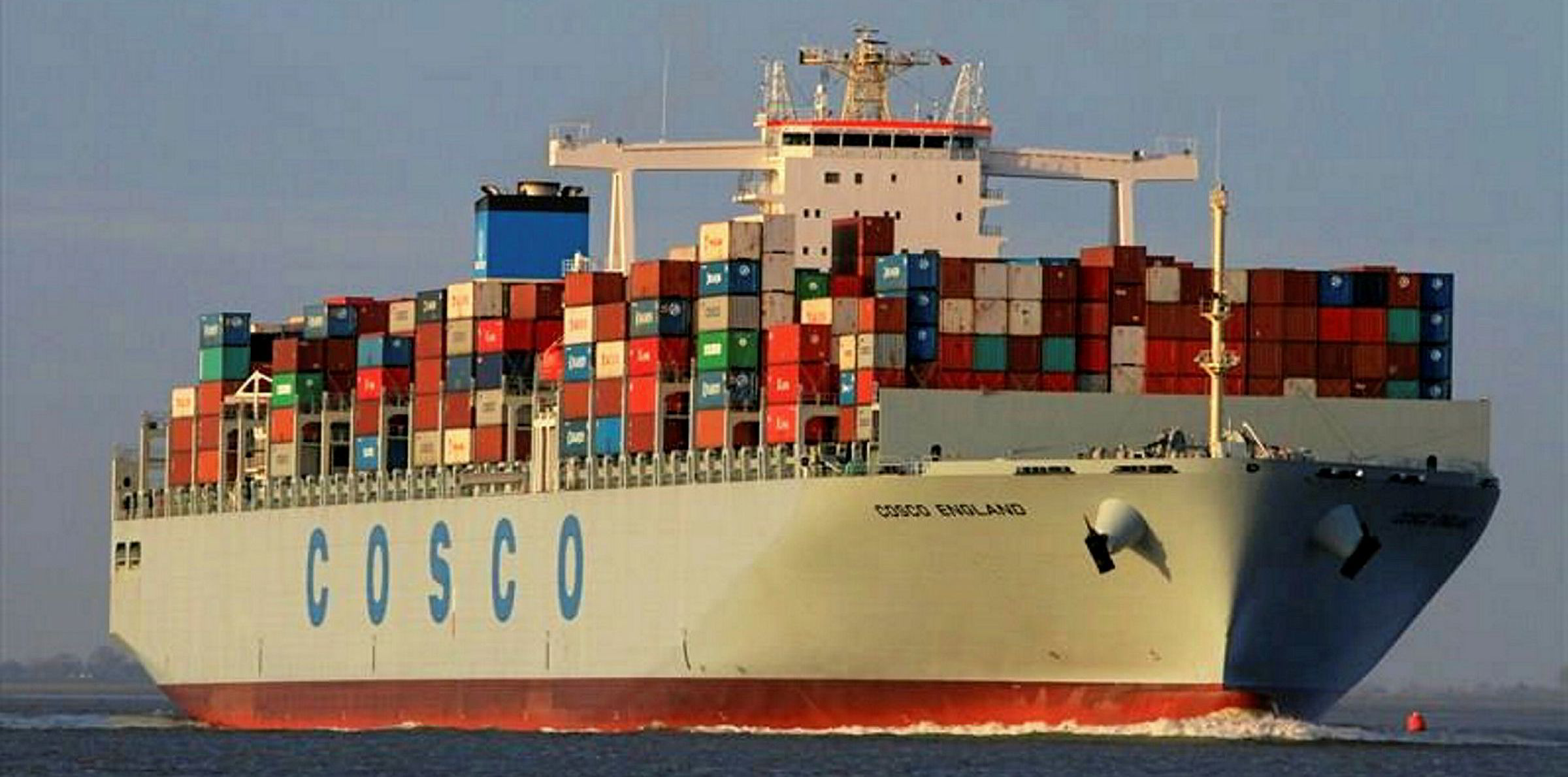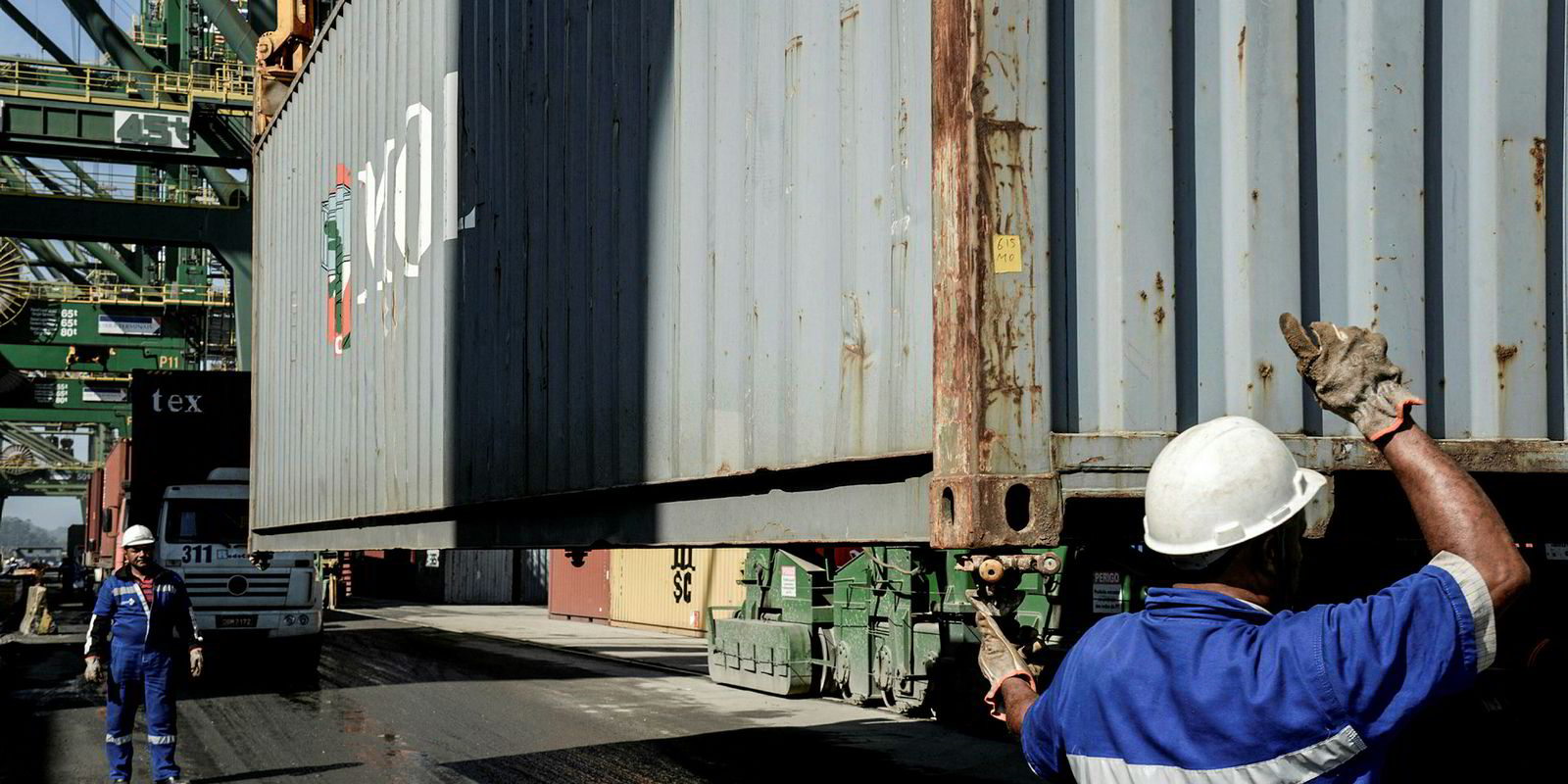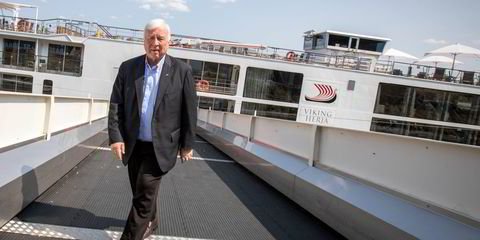China’s growing ties with Brazil has resulted in a surge in volumes for the container trade on the Asia to E ast Coast South America (ECSA) trade.
It is looking to compensate for the impact of its trade war with the US by strengthening its trade with other areas, says ClipperData.
“Higher utilization, higher freight rates, a Brazilian economy recovering from recession to post a 2.1% growth in GDP in 2019 all add up to suggest that prospects are bright for this market,” said analyst James Caldwell.
“A look at recent trade figures shows a clear boost in trade links on the Asia-to-ECSA trade lane.”
Looking at the headhaul figures, ClipperData said its figures show that demand has soared from 110,000-140,000-teu to 165,000-teu in the last six months.
Meanwhile, year-on-year demand for 2019 is forecast to swell by 26% – a huge increase on the 2.5% growth rate seen in the corresponding year-ago period.
Supply is said to have remained steady since July 2018 – at around 140,000-teu, while the latest figures are said to show that as of June 2019, year-on-year supply grew by 9%.
“Trade is also strong on the backhaul leg. Steady supply of around 140,000-teu since July 2018 can be seen, while demand has been around 60,000-teu since January,” said Caldwell.
“There is a greater demand from China for Brazil’s beef, soya, pork and chicken, as well as bulk commodities like iron ore and oil.”
As the US-China trade war has escalated over this past year, China has been focusing on boosting up non-US markets such as Brazil
Richard Caldwell
ClipperData’s latest available monthly statistics show June backhaul demand soared by 21% compared to a year ago, while July demand is up 10% year-on-year.
Year-on-year supply was up by 9% and demand by 5%, while total demand on the backhaul in 2019 is expected to reach 750,000-teu.
The largest country trade flow on the Asia-ECSA market is China to Brazil, at 103,000-teu in July, 47.5% higher than a year earlier
“This suggests that as the US-China trade war has escalated over this past year, China has been focusing on boosting up non-US markets such as Brazil,” said Caldwell.
ClipperData said the development of Cosco’s services in the China Brazil/ECSA market are a “major driver” behind the rapid growth of trade this year in the market.
“The shipping line has boosted its market share by 3% to 17% in September, second only to market-share leader Maersk. However, Maersk saw its share decrease 3% to 23% in the same month,” it said.
Cosco was also the standout performer when it came to capacity in June, increasing it by 60% to 73,500-teu versus 46,000-teu in June 2018.
ClipperData said part of this boost includes the addition of some old panamax vessels that Cosco has introduced to this trade lane.
But Cosco has not been alone it looking to grab a large share of this expanding market, with Ocean Network Express (ONE) and CMA CGM increasing capacity by 44% and 18% respectively.
ClipperData said the surge in demand on the headhaul leg has had a knock-on effect on nominal load factor, jumping from 80 percent in February to 120 percent in July 2019, although it is set to decrease to 108% by November as demand contracts.
“These strong utilization rates and the squeeze on capacity have bolstered freight rates – no doubt another factor attracting carriers to the trade,” said Caldwell.
ClipperData said other countries within South America are also strengthening trade links with China – in what is a positive sign for future trade development.
Both Peru and Chile have signed memorandums of understanding with China to support the Belt and Road Initiative.
China and Argentina also signed a Joint Action Plan 2019-2023, to boost co-operation between the two countries.
“Strong demand, rates and utilization, coupled with the continuation of the US-China trade war and the spread of Belt and Road Initiative, suggest that the growth of Asia/ECSA trade will continue to be strong,” concluded Caldwell.






